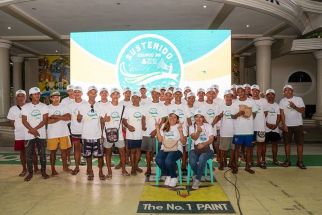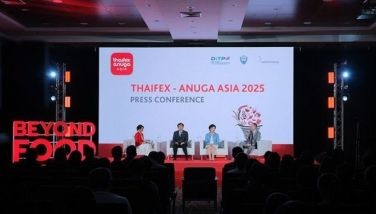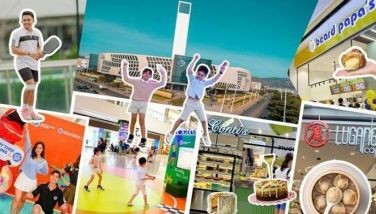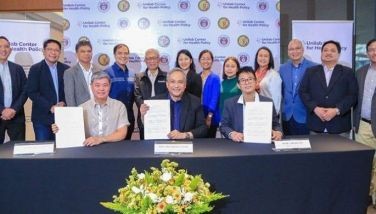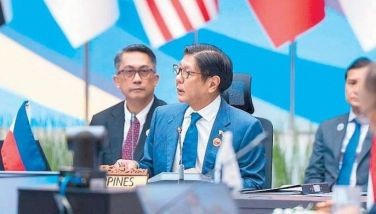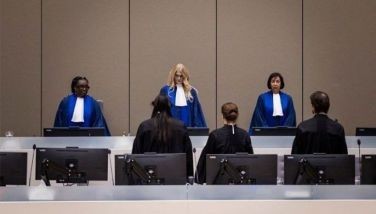The heat is on NAIA
While the DOTC is doing its best with the ongoing rehabilitation work to cool down hot tempers due to the heated conditions at the NAIA 1, nothing could ease the exasperation of passengers (especially arriving ones) over the fever-like temperatures at the NAIA. The summer heat is simply unbearable despite the coolers installed by authorities inside the terminal.
In fact, many are worried about collapsing or fainting like what happened to an outbound passenger two weeks ago, with temperatures hitting 37-plus degree Celsius in Metro Manila. Until the new air conditioning units arrive in August, passengers and airport employees will just have to suffer the heat. No wonder the Philippines continues to be included in the list of the world’s Top 10 worst airports. Last year, NAIA 1 topped the survey by travel website “The Guide to Sleeping in Airports†(www.sleepinginairports.net) on the World’s Worst Airports in terms of passenger discomfort (crowded terminals, limited seating), inconvenience (no 24-hour service or food shops), unclean facilities (dirty bathrooms and floors, etc.) and unfriendly customer service (including anti-airport sleeping policies).
NAIA 1 though has shown slight progress when it landed in the Number 8 spot among the World’s Top 10 Worst Airports according to Wall St. Cheat Sheet, a US-based financial media company. But take note, we can consider it consuelo de bobo that NAIA is in the same league as the airports in great cities like New York with the JFK International and La Guardia, Heathrow in London and the Paris Beauvais Tille.
In case you missed it, at Number 10 in Wall St. Cheat Sheet’s worst ranking is Tribhuvan International in Kathmandu, Nepal because of interminable weather delays and shoddy restroom maintenance akin to a Glasgow sports bar. At Number 9 is Jomo Kenyatta International in Nairobi, Kenya built for a passenger capacity of 2.5 million, but now finds itself having to service double that number of passengers who described the airport as hot, ugly, dirty and confusing.
At the Number 8 spot, NAIA Terminal 1 has been included for its “unkempt conditions, soup kitchen-style lines that feed into more lines and an overall sense of futility†that gives the term “stuck in the 1970s†a whole new level. La Guardia is at Number 7 whose small check-in areas and overflowing security lines are a source of irritation, not to mention the lack of connecting transportation except for a slow bus. Plus, Wi-Fi isn’t free and it’s difficult to get a cellphone connection. (Incidentally, La Guardia is also ranked as “one of the most scary airports in the world†because of the crowded skies and the towering skyscrapers of Manhattan, its proximity to both JFK and Newark airports, and the main runway that extends to Flushing Bay.)
London’s Heathrow airport fares even worse, unflatteringly described as “four shopping malls that have been smashed together,†with passengers probably feeling like prisoners corralled into a central seating area and prevented from passing through security at the gates until departure time.
Number 5 is Paris Beauvais Tille whose insufficient seating and service facilities plus the half-tent, half warehouse atmosphere merited the ire of passengers. The bug infested N’Djamena International in Chad, Africa is Number 4; JFK (shown in photo from Wikimedia Commons) is Number 3 – described as “resolutely hellish.†Chicago Midway is Number 2 for being the worst when it comes to on-time departures, while the Top 1 is Sao Paulo-Guarulhos in Brazil for its kilometric immigration lines, unannounced gate changes, understaffed and outdated facilities and the frequently delayed arrival schedules.
Recto vs. Ongpin?
Controversial businessman Roberto “Bobby†Ongpin has lately been at odds with many people, and talk in business circles is that they now include his nephew businessman Eric Recto. But the fact of the matter is – RVO and Eric have been together in numerous projects such as Alphaland (with its high-end developments like the exclusive Balesin Island Club, City Club and Alphaland Marina) and Philweb Corporation among many others. Eric, who is now the chairman and major shareholder of the Philippine Bank of Communications (after having bought Bobby’s shares in the bank), jointly owns Montorfino Holdings with the Ashmore Group that has since broken relations with Bobby Ongpin.
Rumors around the business circles indicate that the two businessmen finally split. Both Eric and Bobby, however, say these rumors are unfounded and absolutely not true. Their relationship remains close, but both of them have gone their separate ways business wise. The fact is, Eric Recto is acting as a conduit between the two opposing parties – Ashmore and RVO – with the hope that things will be amicably settled soon as in “All’s well that ends well.â€
Another filthy day in Metro Manila
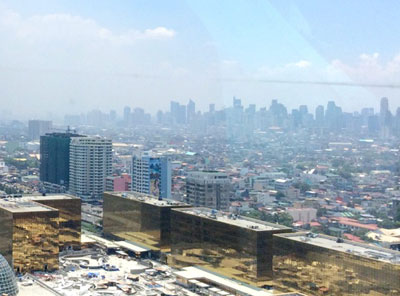
Pollution in Metro Manila continues at killer levels not only because of the traffic congestion, but also due to the rising temperatures exacerbated by climate change. Pollutants hovering in the air trap the heat on the surface and prevent it from rising to the atmosphere, and with no wind blowing at all, Metro Manila is starting to feel like a concrete urban hell with the trapped heat from concrete buildings, roads and structures.
Just how filthy the air in the metropolis is can be seen in the aerial photo taken yesterday morning. The main culprit, however, is that a lot of the pollution in Metro Manila is very likely from China where industrial pollution is blamed for the smog that’s even reaching as far as Seattle and Vancouver.
* * *
Email: spybits08@yahoo.com
- Latest
- Trending














